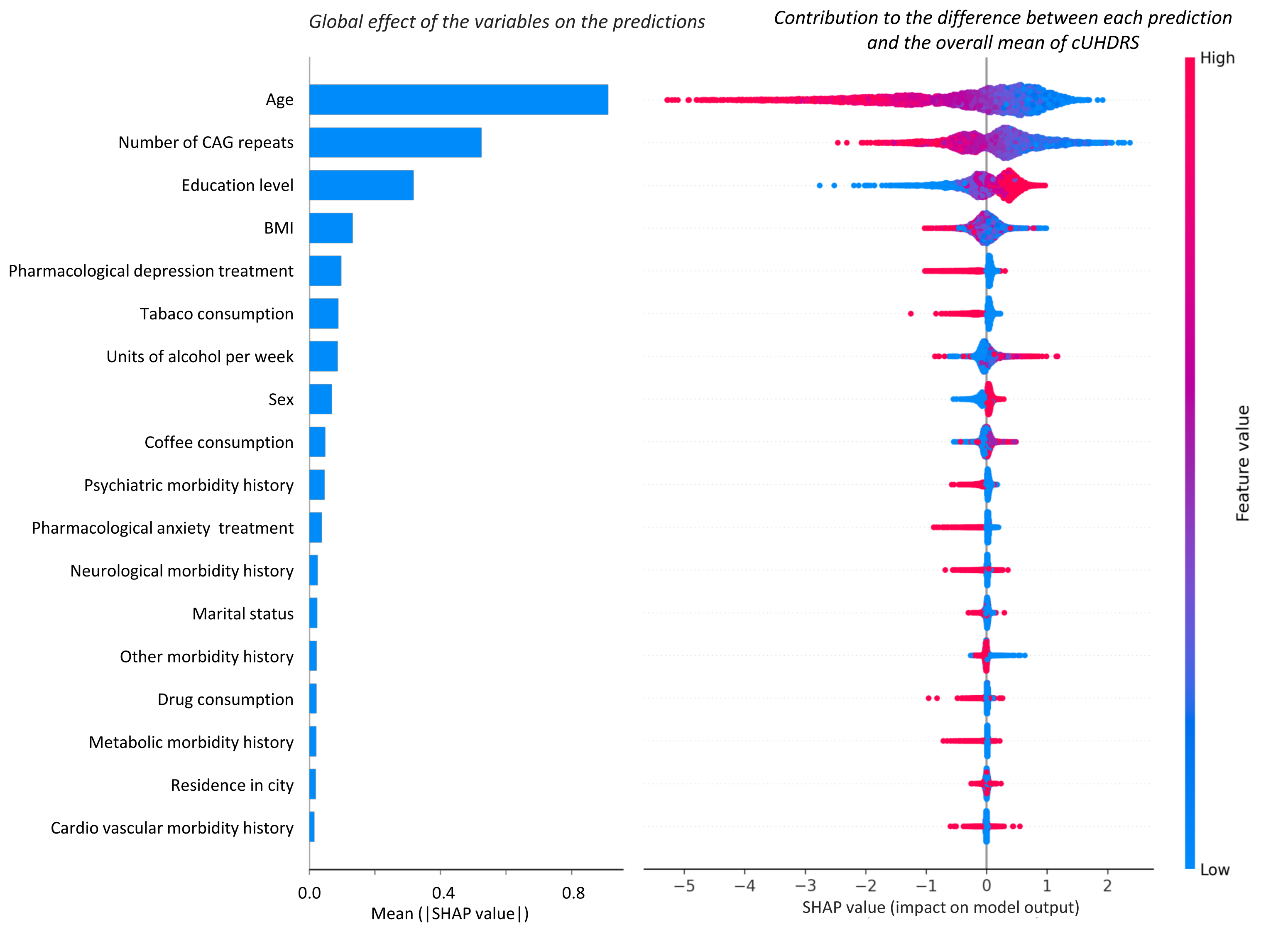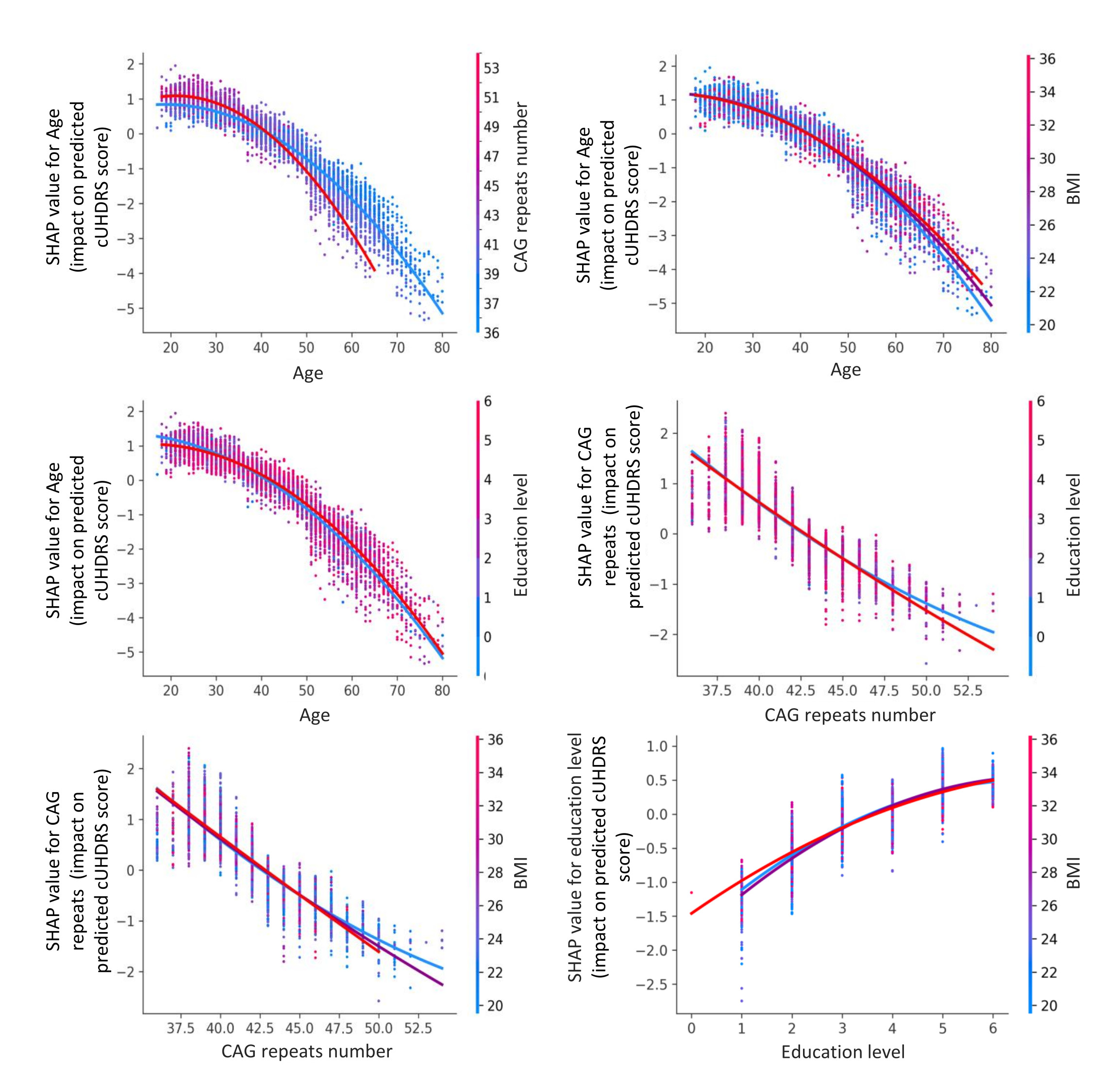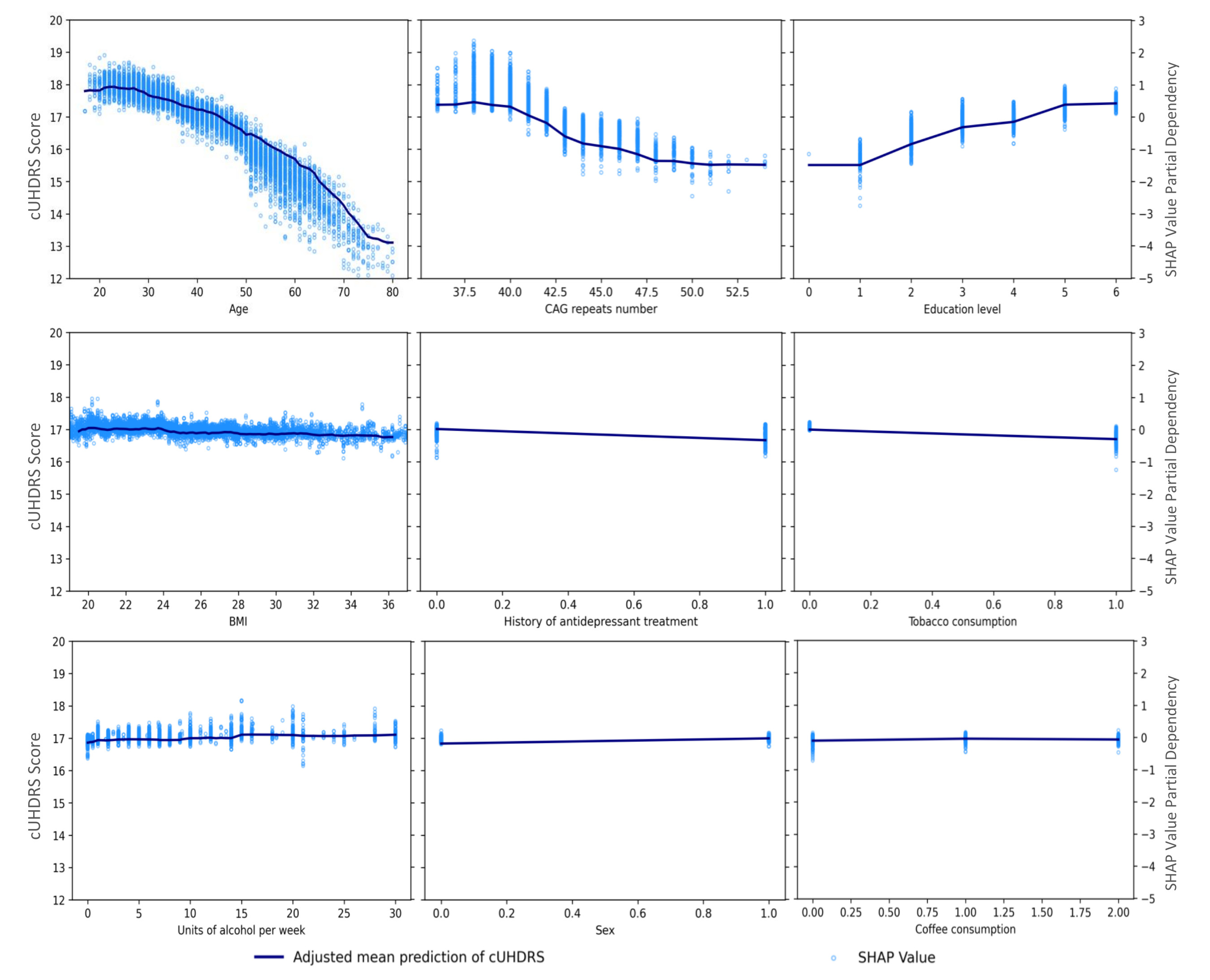Category: Huntington's Disease
Objective: We aimed to identify, as early as the presymptomatic phase, the modifiable factors likely to influence the progression of Huntington’s disease (HD), while identifying the interactions between these factors using an explained machine learning approach.
Background: HD is a neurodegenerative disorder characterized by progressive motor, cognitive, and psychiatric symptoms. Despite the absence of a cure, improved care management has significantly extended life expectancy of patients. Thanks to the data collected by the global Enroll study, it is now possible to identify modifiable environmental and behavioral factors to slow the rate of disease progression even before symptoms appear.
Method: We included 2,636 presymptomatic individuals (comparison with family controls) drawn from the prospective observational cohort Enroll-HD, with more than 35 CAG repeats and at least two assessments of disease progression measured with the composite Huntington’s disease rating Scale (cUHDRS). The association between sociodemographic factors, health behaviors, health history, and cUHDRS trajectory was assessed with a mixed-effects random forest using partial dependence plots and the contribution to disease evolution and interactions were evaluated with Shapley additive explanation method.
Results: Participants were followed by an average of 3.4 (SD = 1.97) years. The study confirmed the negative impact of age and a high number of CAG repeats on disease progression, as well as their interaction (Fig 1). We found that a high educational level was from age 35 onwards, a body mass index (BMI) less than 23 kg/m2 before the age of 40 and greater than 23 kg/m2 thereafter (Fig 2), alcohol consumption of less than 15 units per week, current coffee consumption and no smoking were associated to slow disease progression, as did no previous exposure to antidepressants, no psychiatric history, or comorbidities, and being female (Fig 3). Other comorbidities or marital status showed no major association with HD evolution.
Conclusion: Reducing modifiable risk factors for HD is one way to support the presymptomatic population. A high level of education, low-to-moderate alcohol consumption, current coffee consumption, no smoking, and BMI control are likely to slow disease progression in this population.
SHAP values for predictions by level of relevance
cUHDRS predictions for most relevant interactions
cUHDRS prediction for the most relevant variables
To cite this abstract in AMA style:
A. Gil-Salcedo, R. Massart, L. Cleret-de-Langavant, A. Bachoud-Levi. Modifiable factors associated with Huntington’s disease progression in presymptomatic participants: explained longitudinal machine learning modelling [abstract]. Mov Disord. 2024; 39 (suppl 1). https://www.mdsabstracts.org/abstract/modifiable-factors-associated-with-huntingtons-disease-progression-in-presymptomatic-participants-explained-longitudinal-machine-learning-modelling/. Accessed January 4, 2026.« Back to 2024 International Congress
MDS Abstracts - https://www.mdsabstracts.org/abstract/modifiable-factors-associated-with-huntingtons-disease-progression-in-presymptomatic-participants-explained-longitudinal-machine-learning-modelling/



